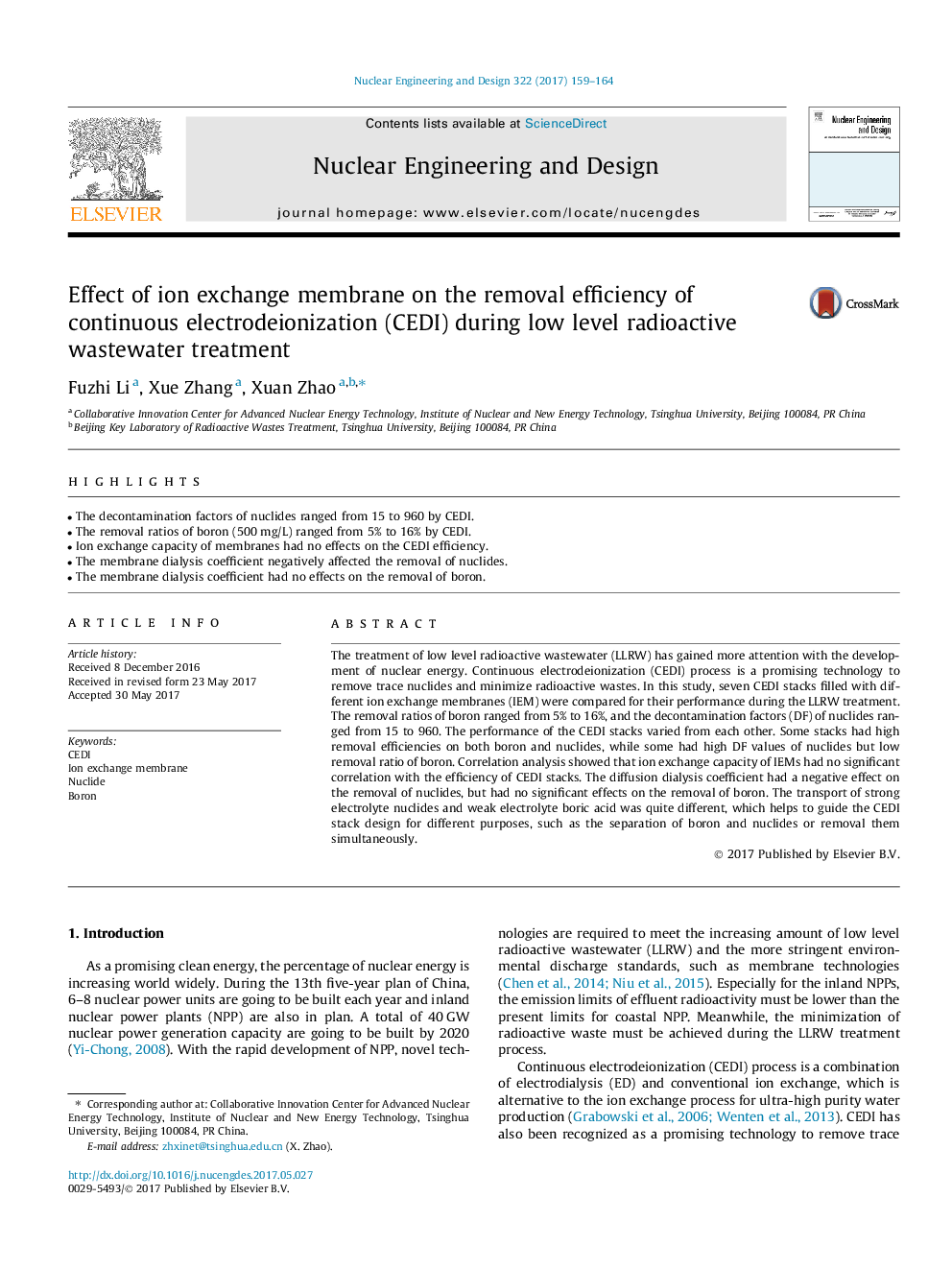| Article ID | Journal | Published Year | Pages | File Type |
|---|---|---|---|---|
| 4925322 | Nuclear Engineering and Design | 2017 | 6 Pages |
Abstract
The treatment of low level radioactive wastewater (LLRW) has gained more attention with the development of nuclear energy. Continuous electrodeionization (CEDI) process is a promising technology to remove trace nuclides and minimize radioactive wastes. In this study, seven CEDI stacks filled with different ion exchange membranes (IEM) were compared for their performance during the LLRW treatment. The removal ratios of boron ranged from 5% to 16%, and the decontamination factors (DF) of nuclides ranged from 15 to 960. The performance of the CEDI stacks varied from each other. Some stacks had high removal efficiencies on both boron and nuclides, while some had high DF values of nuclides but low removal ratio of boron. Correlation analysis showed that ion exchange capacity of IEMs had no significant correlation with the efficiency of CEDI stacks. The diffusion dialysis coefficient had a negative effect on the removal of nuclides, but had no significant effects on the removal of boron. The transport of strong electrolyte nuclides and weak electrolyte boric acid was quite different, which helps to guide the CEDI stack design for different purposes, such as the separation of boron and nuclides or removal them simultaneously.
Keywords
Related Topics
Physical Sciences and Engineering
Energy
Energy Engineering and Power Technology
Authors
Fuzhi Li, Xue Zhang, Xuan Zhao,
